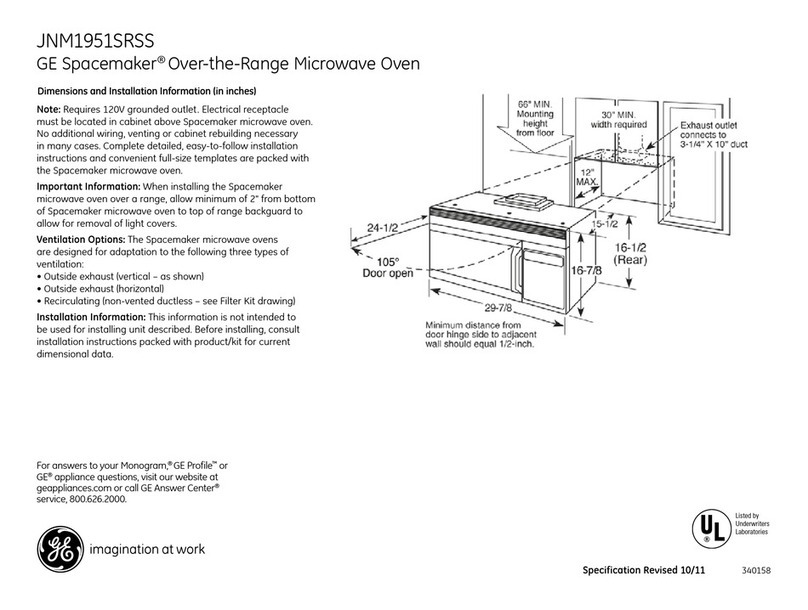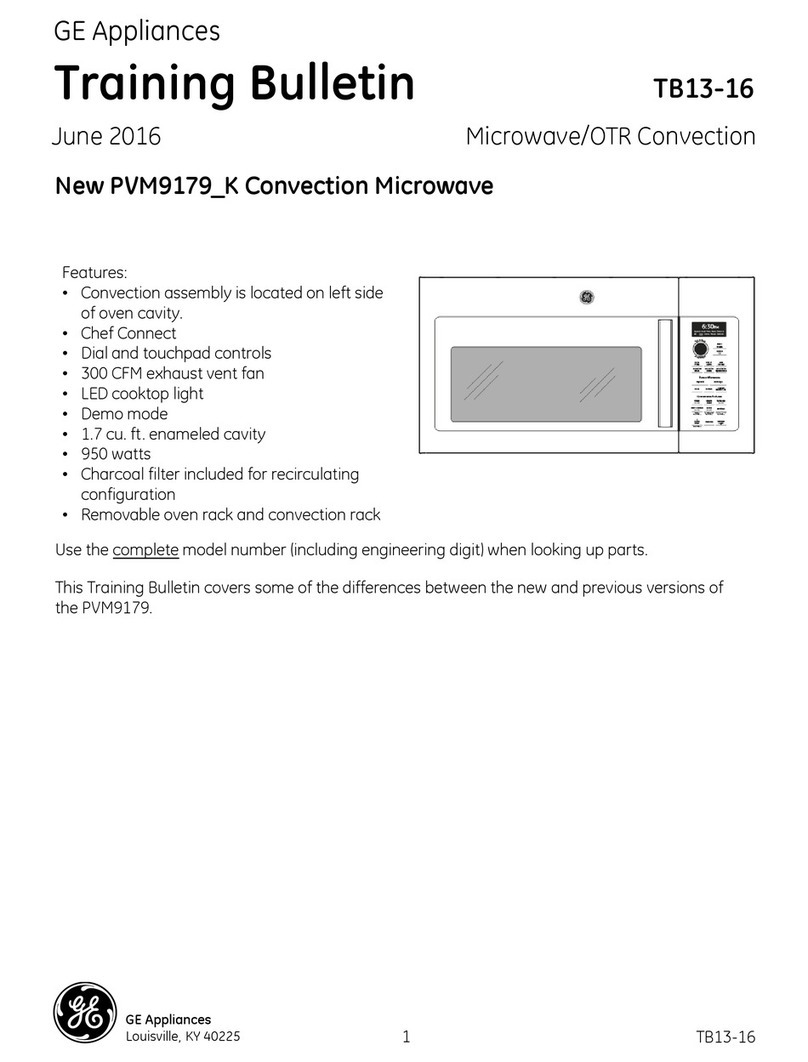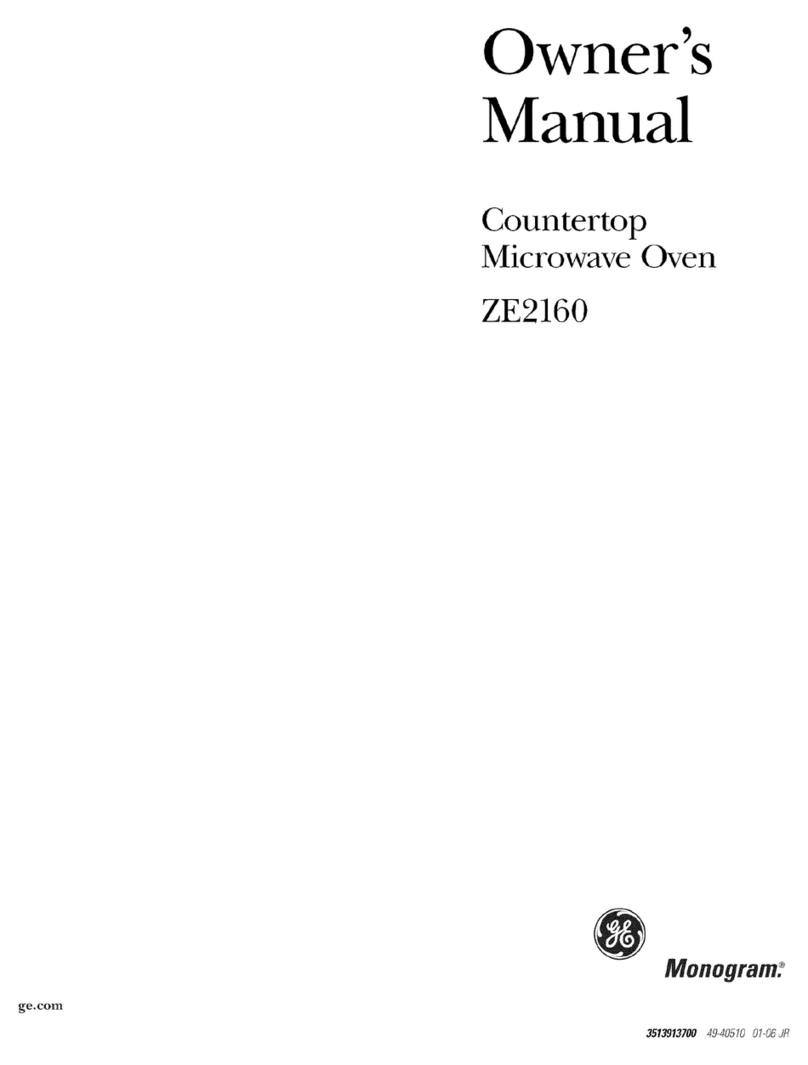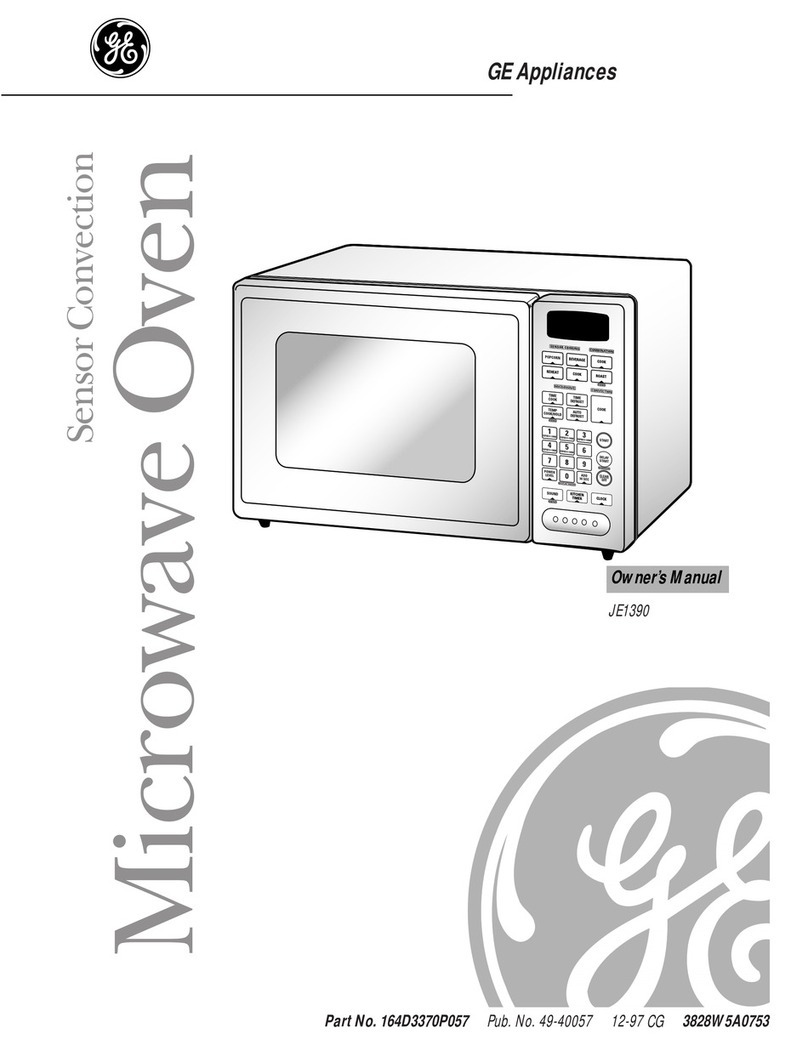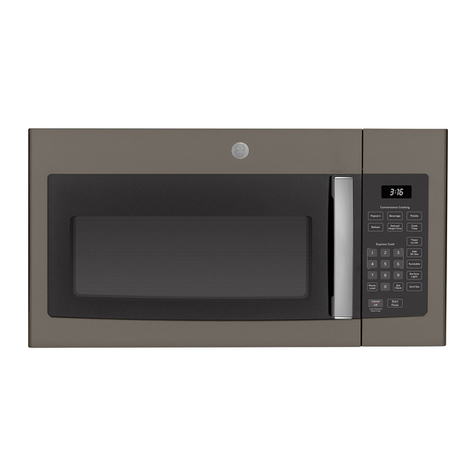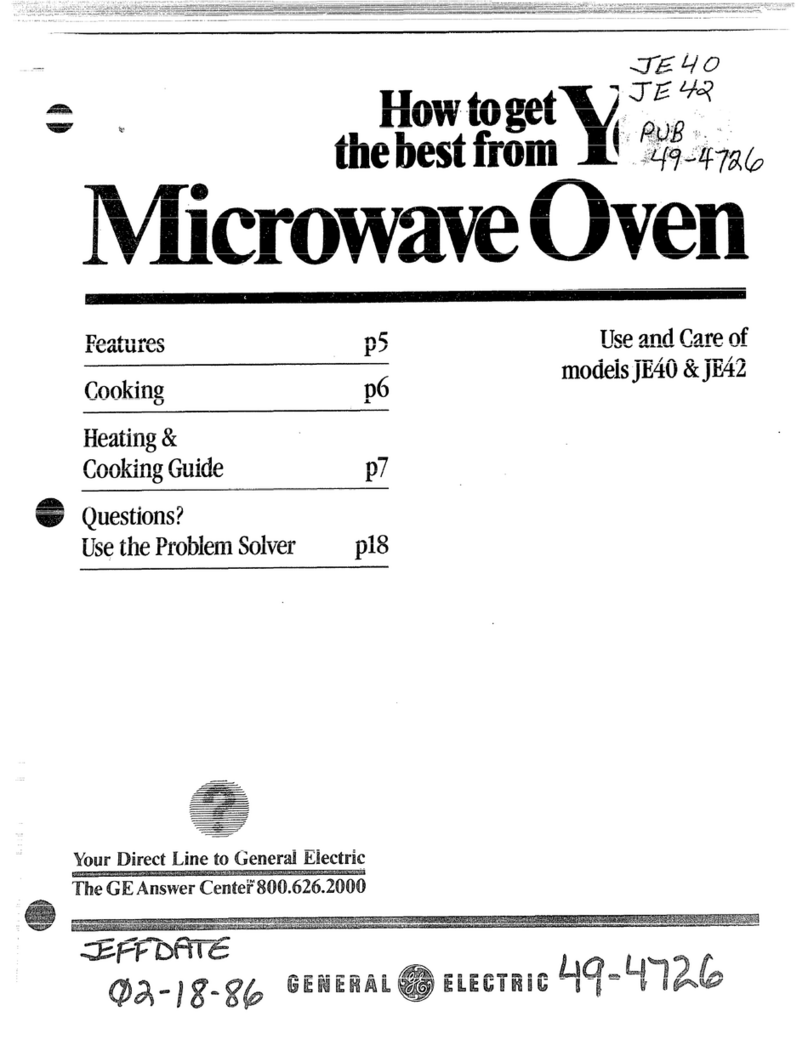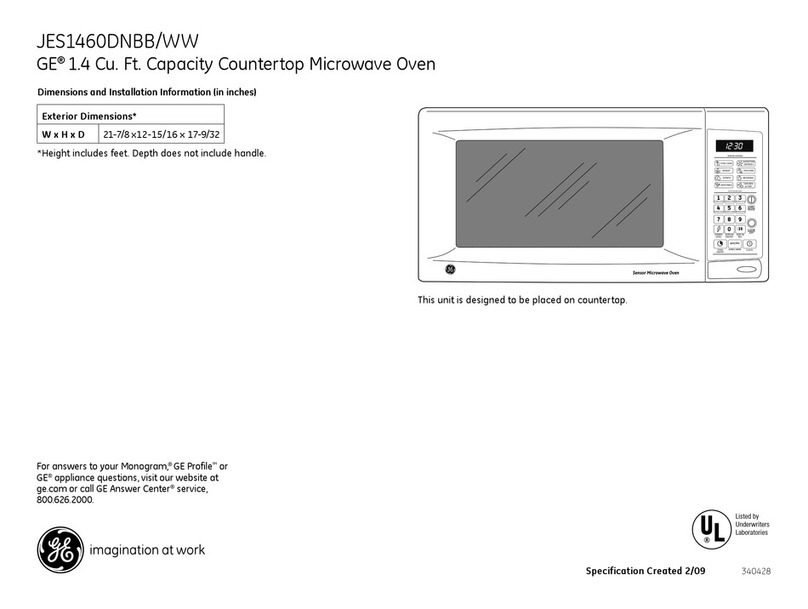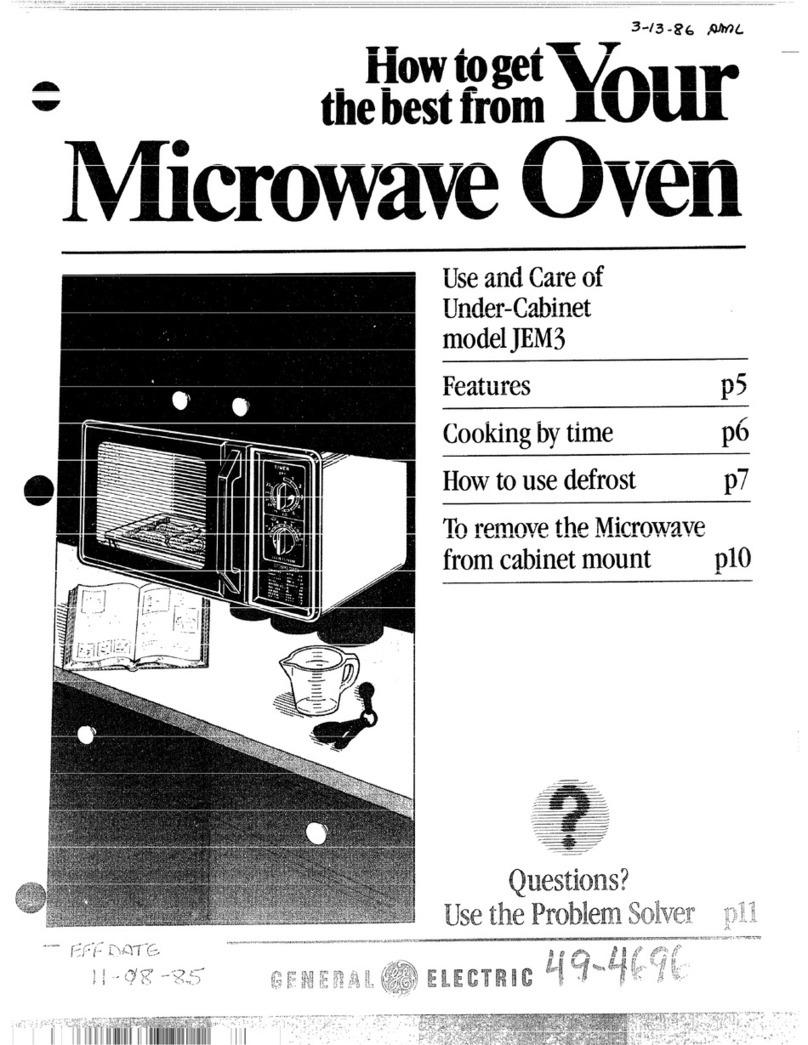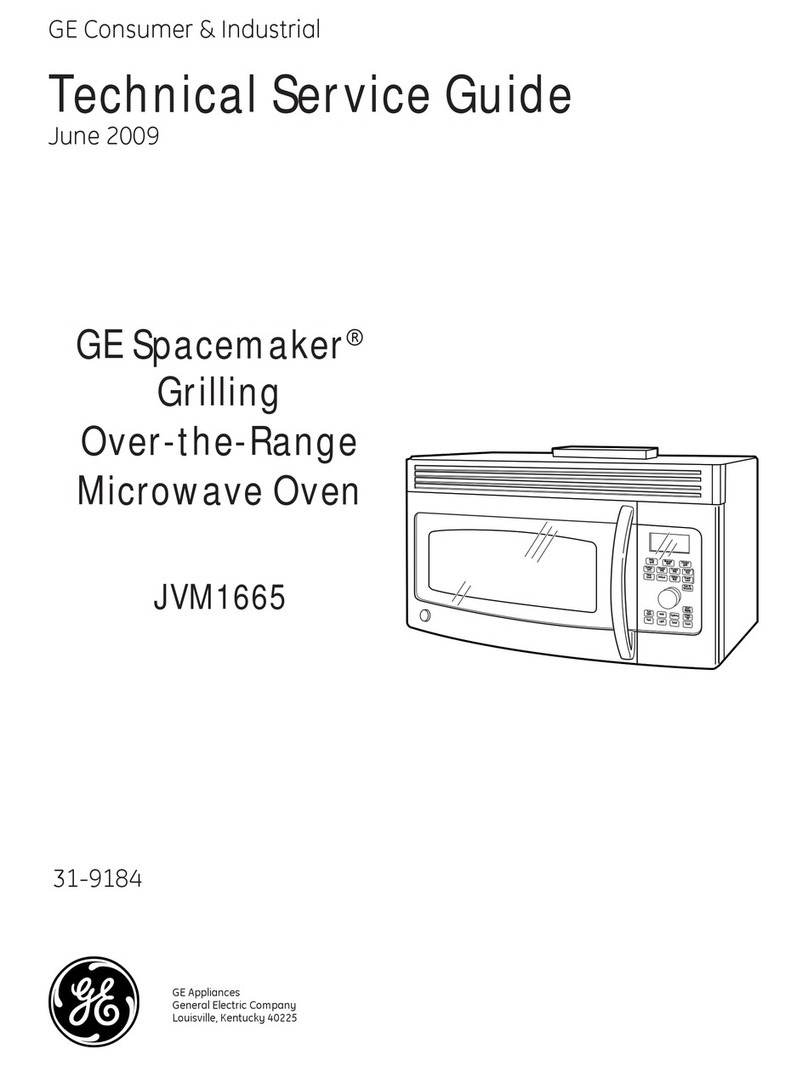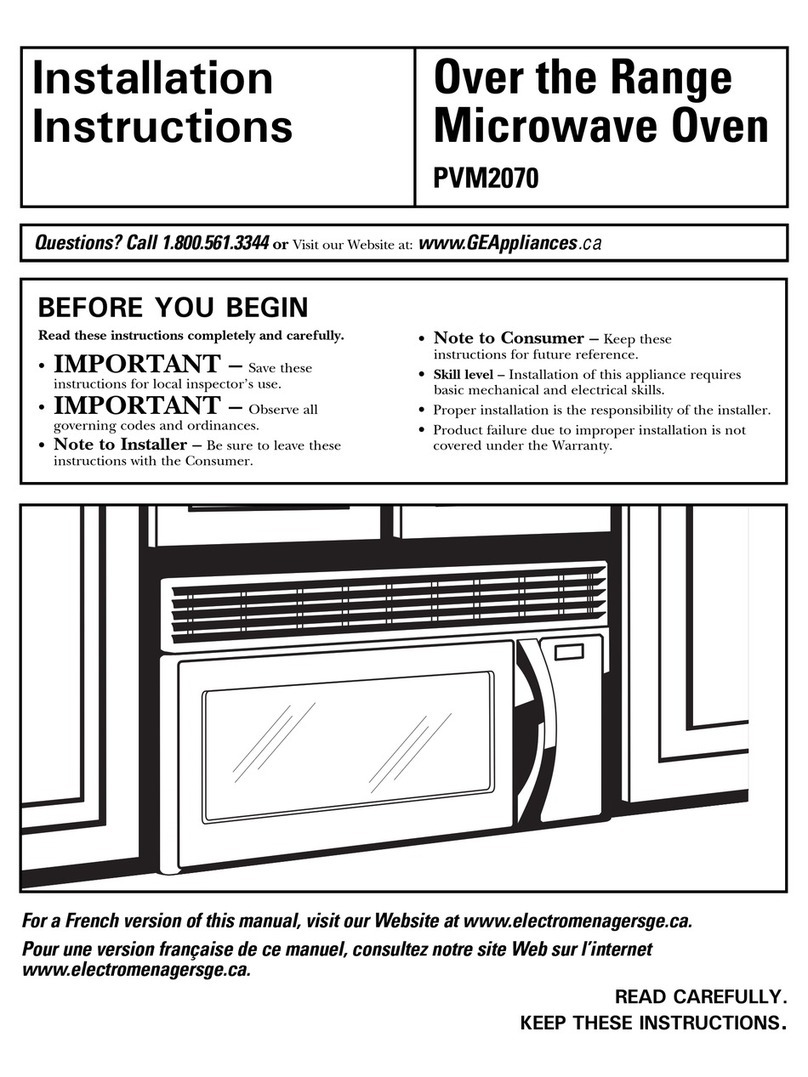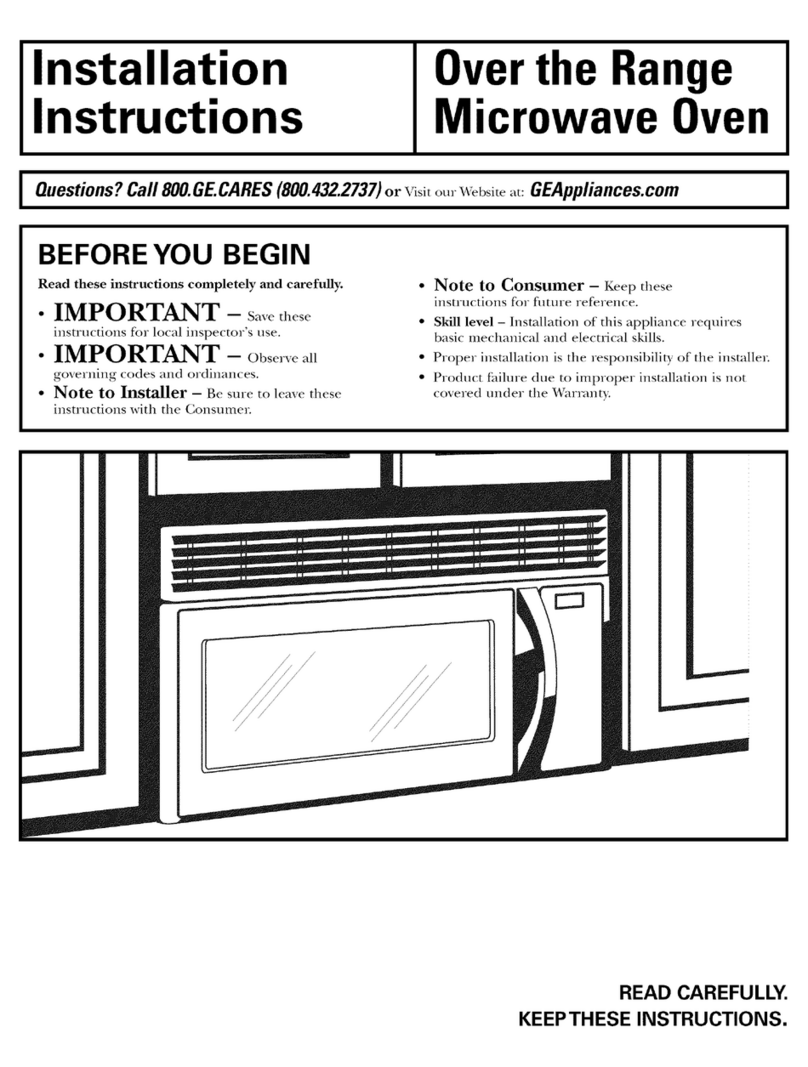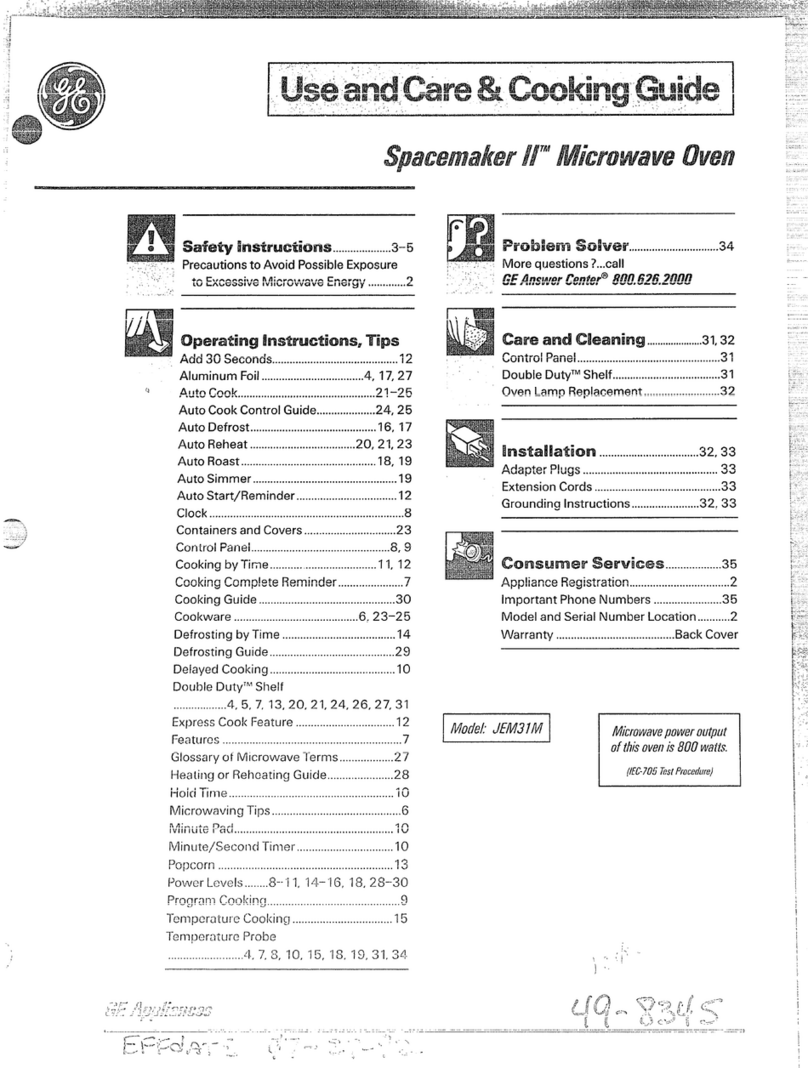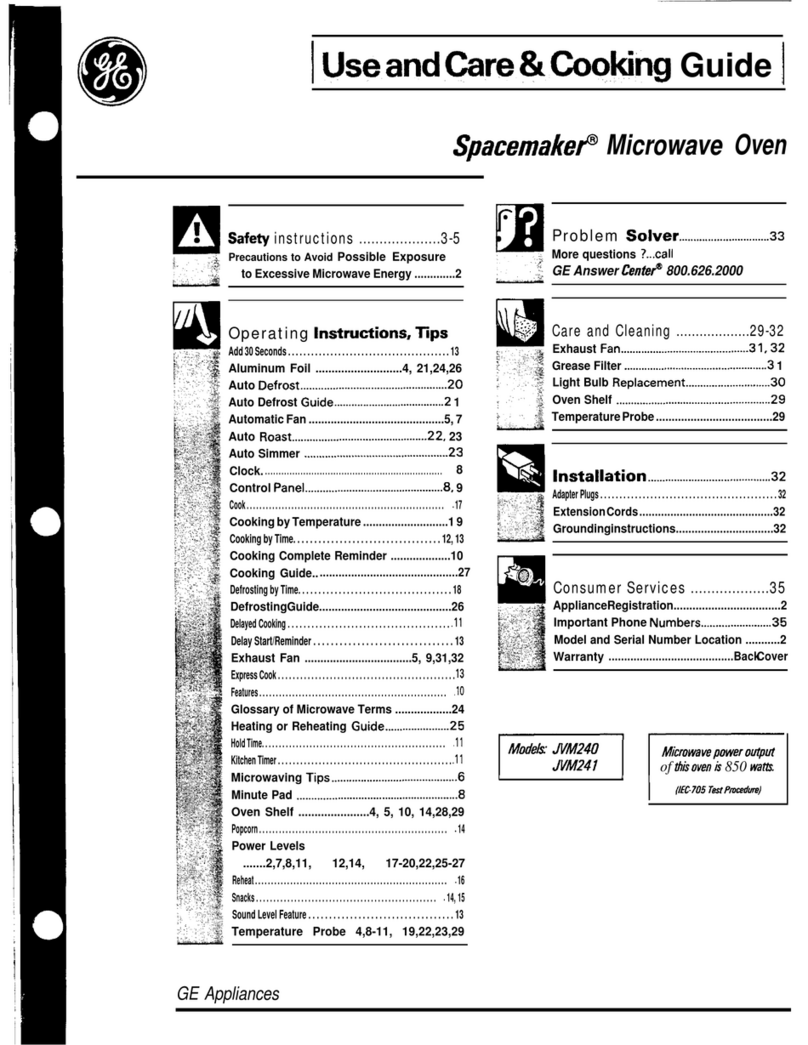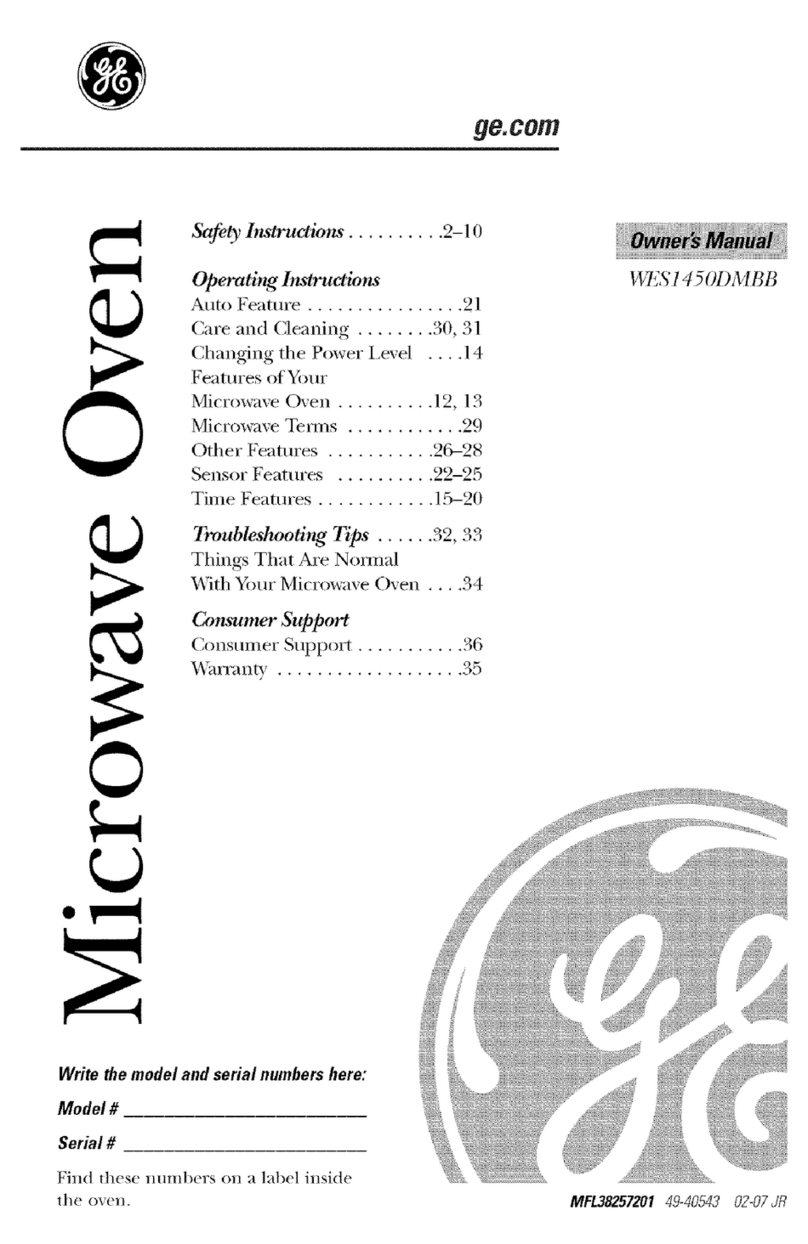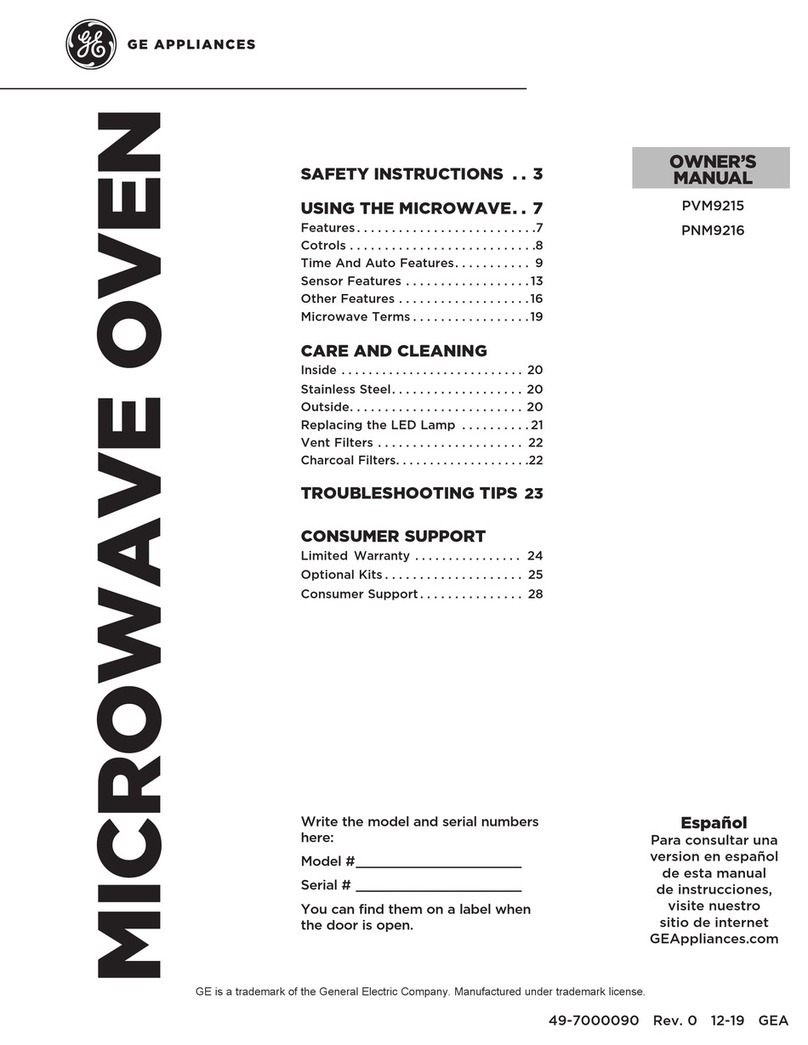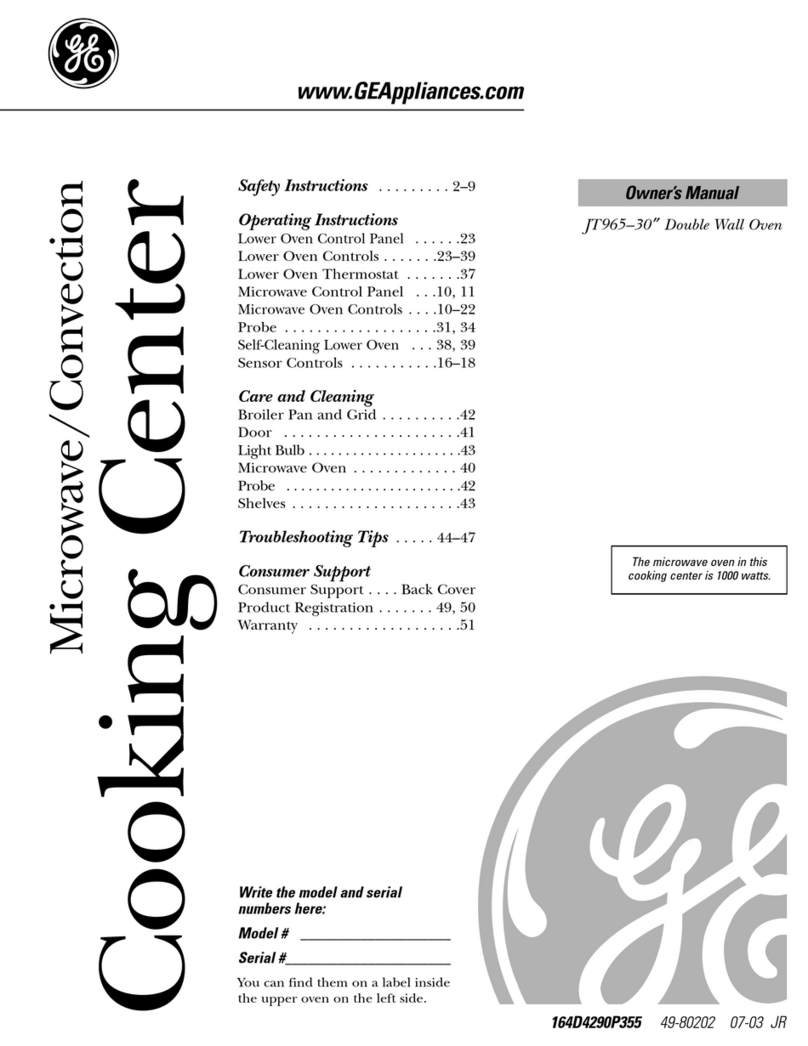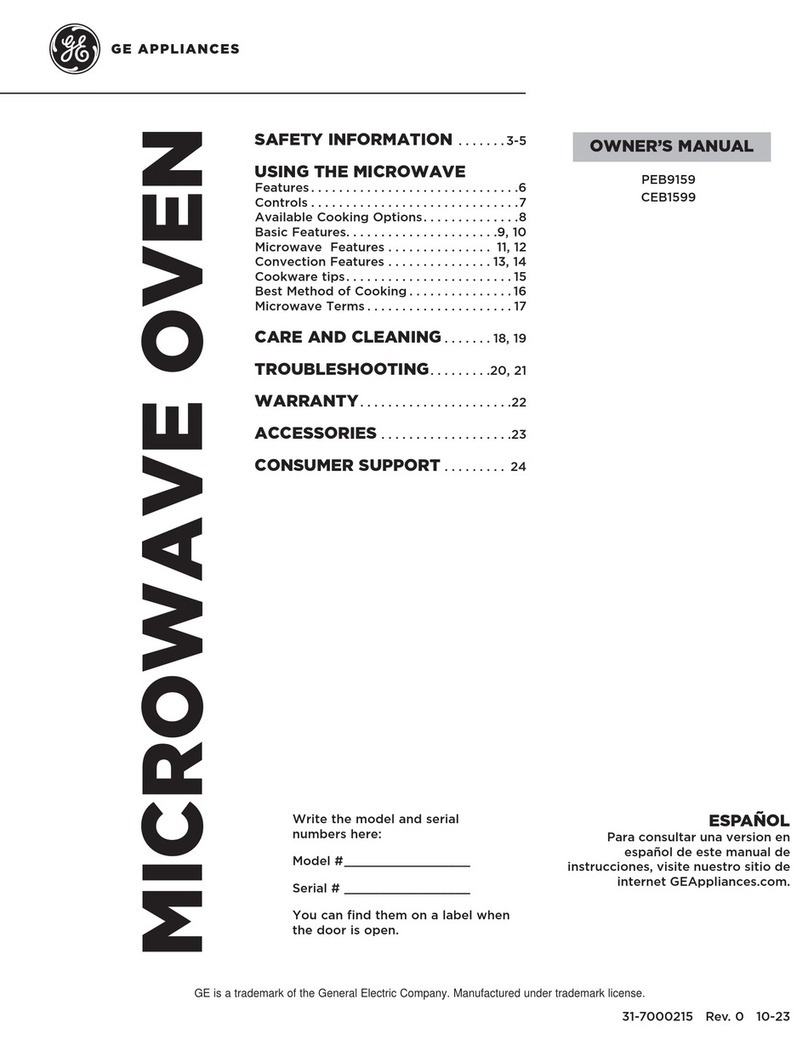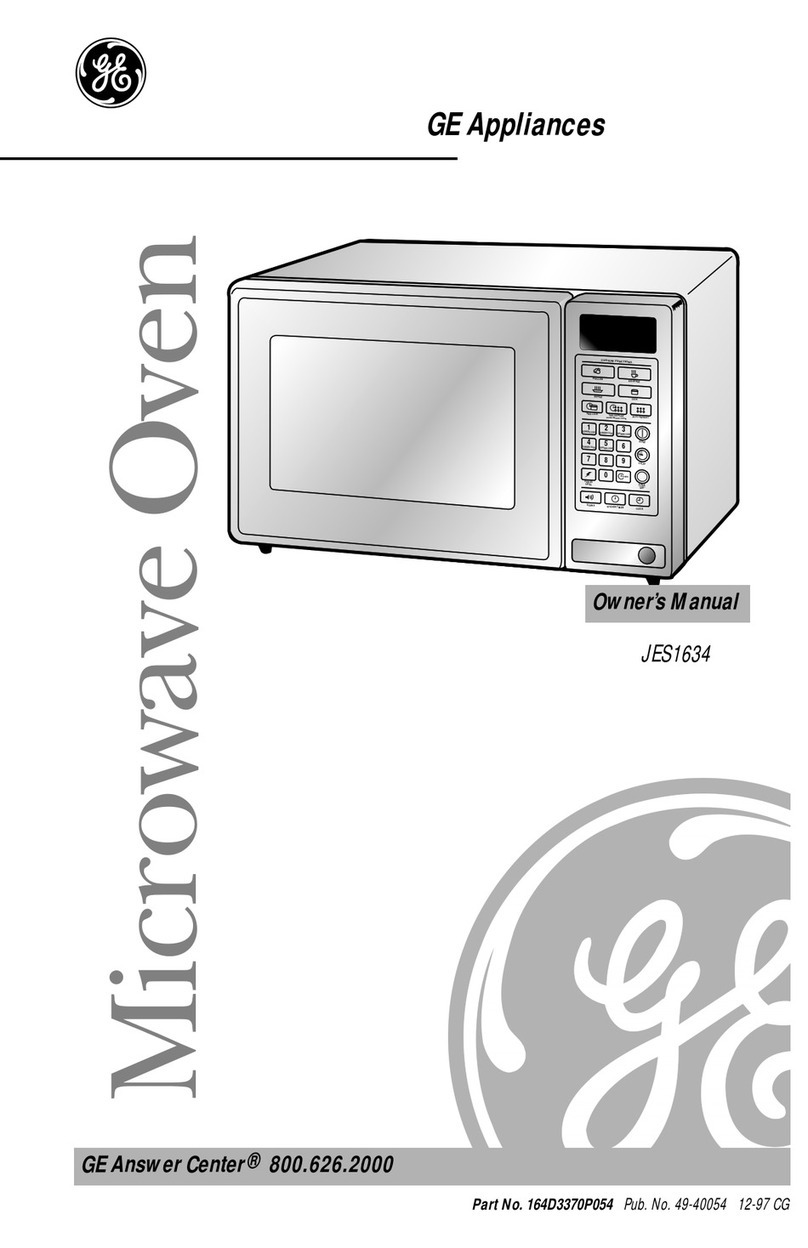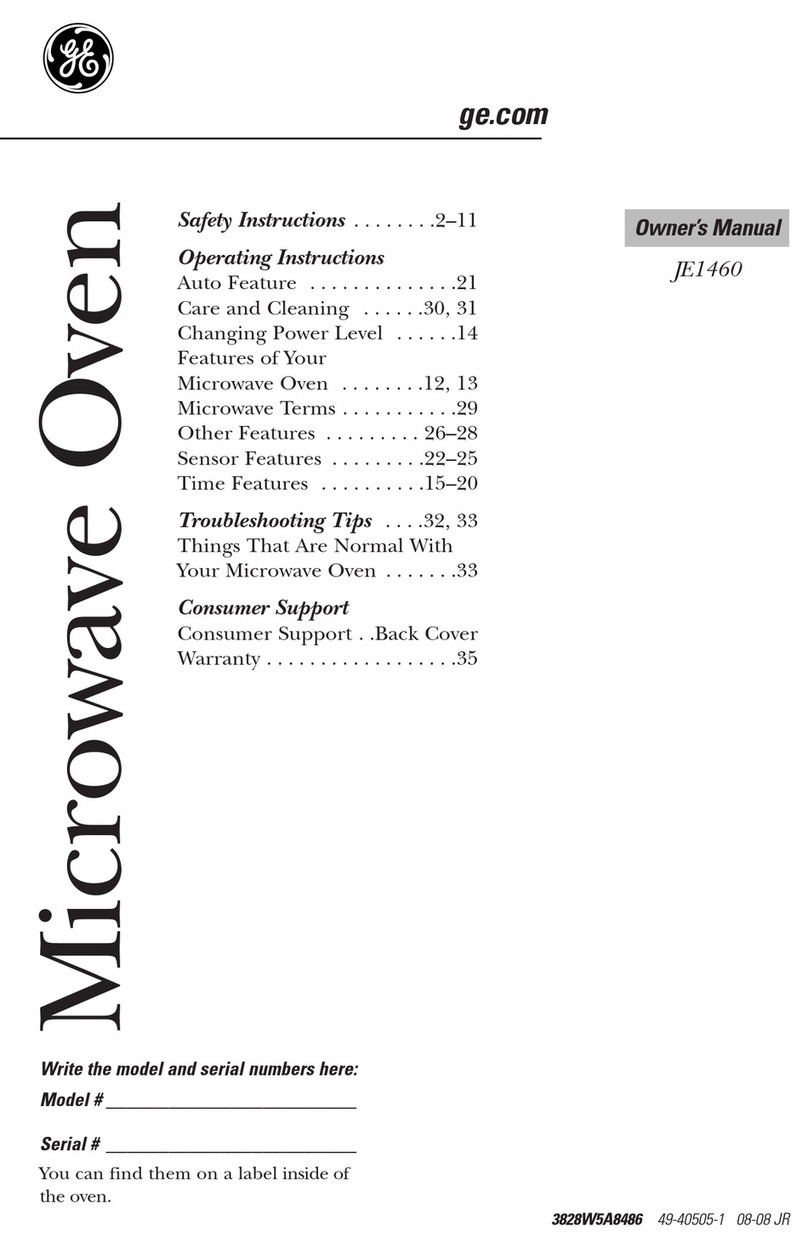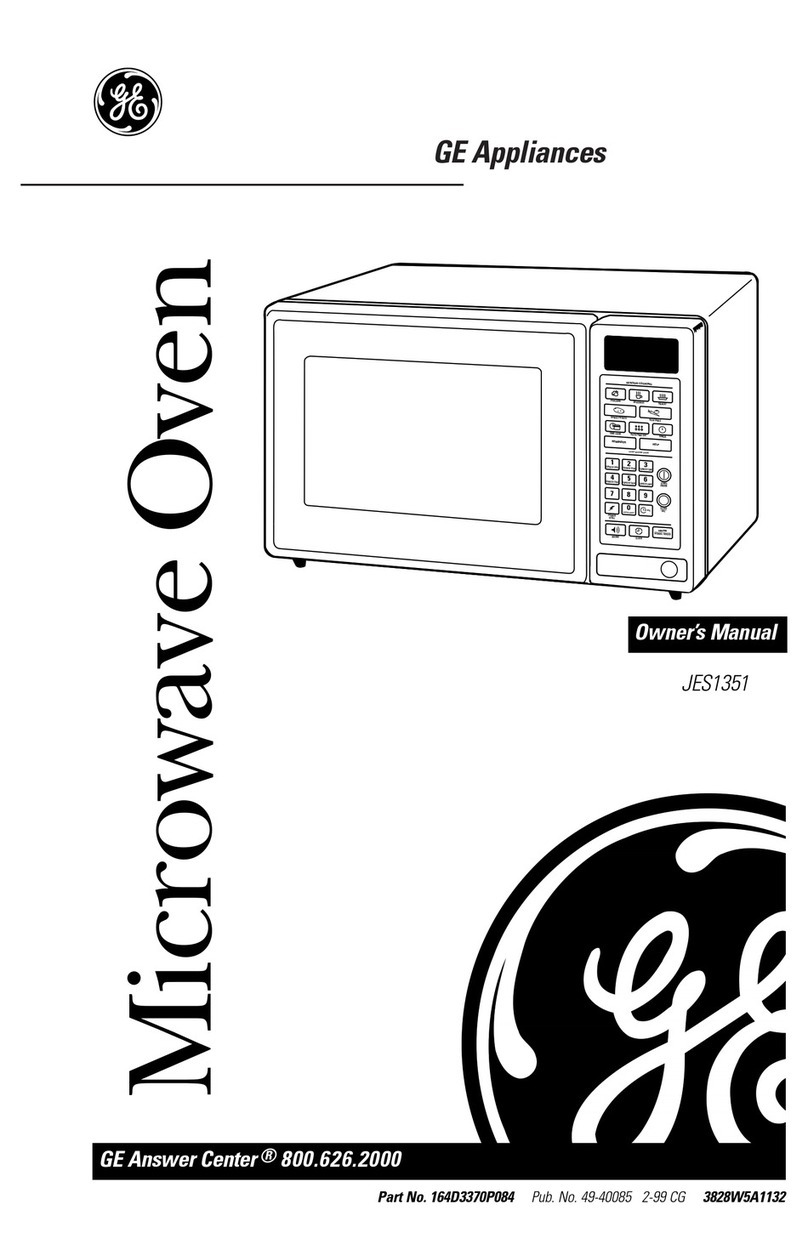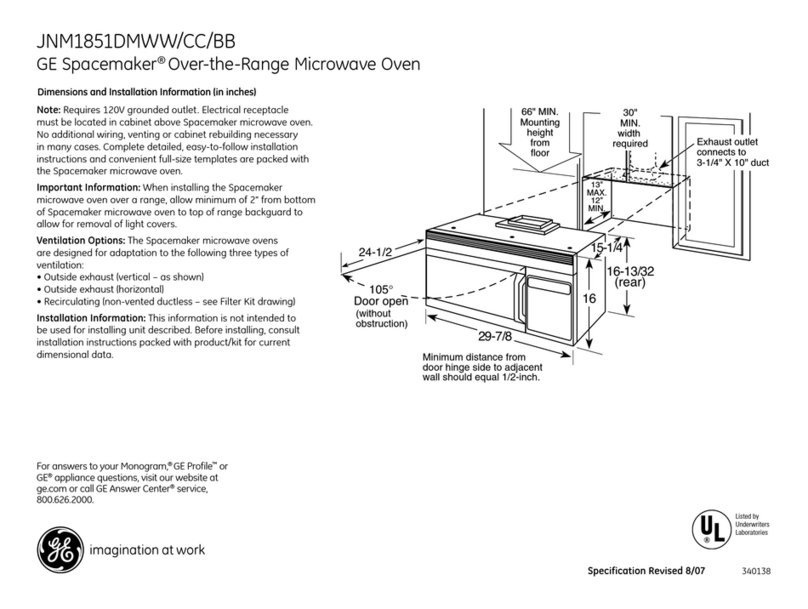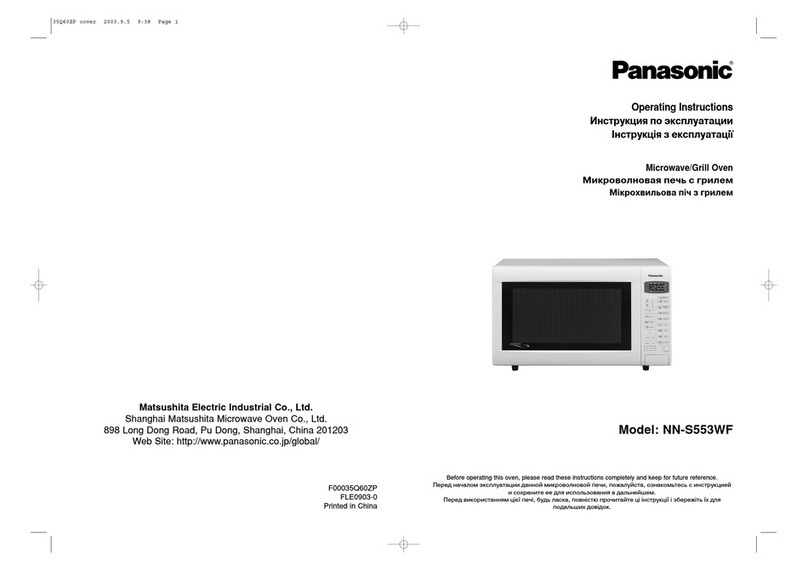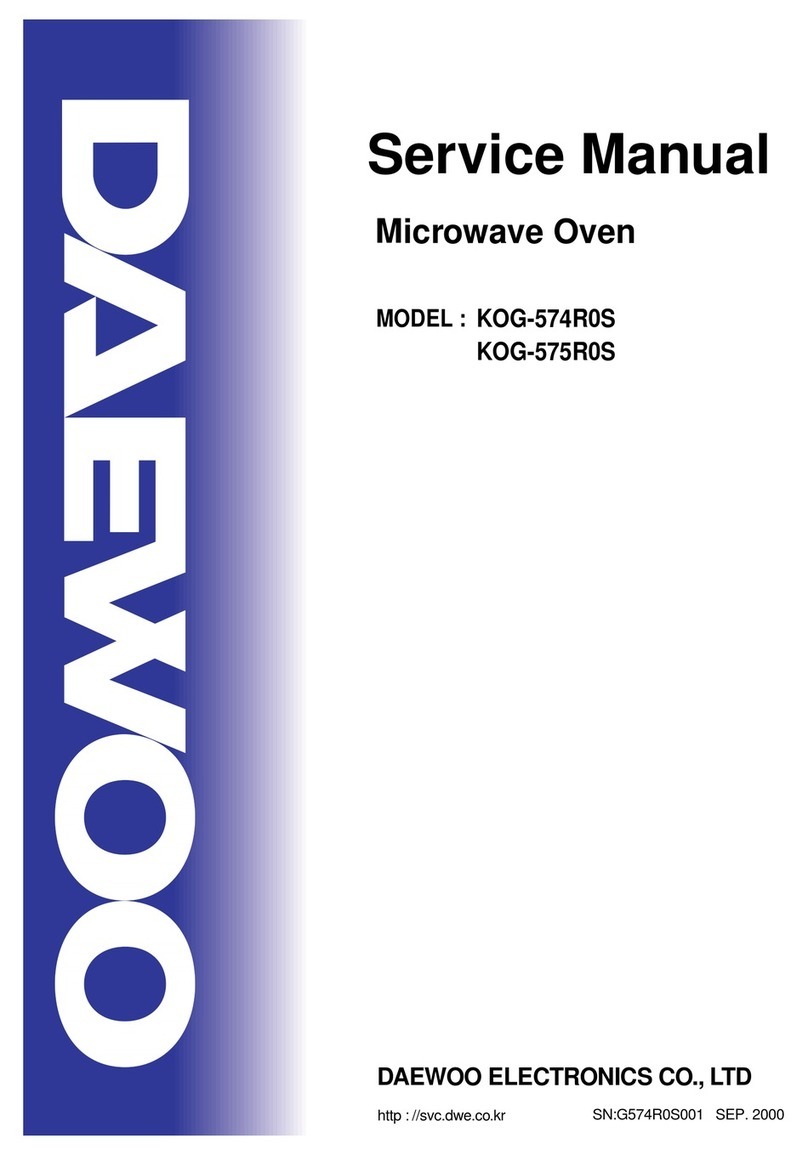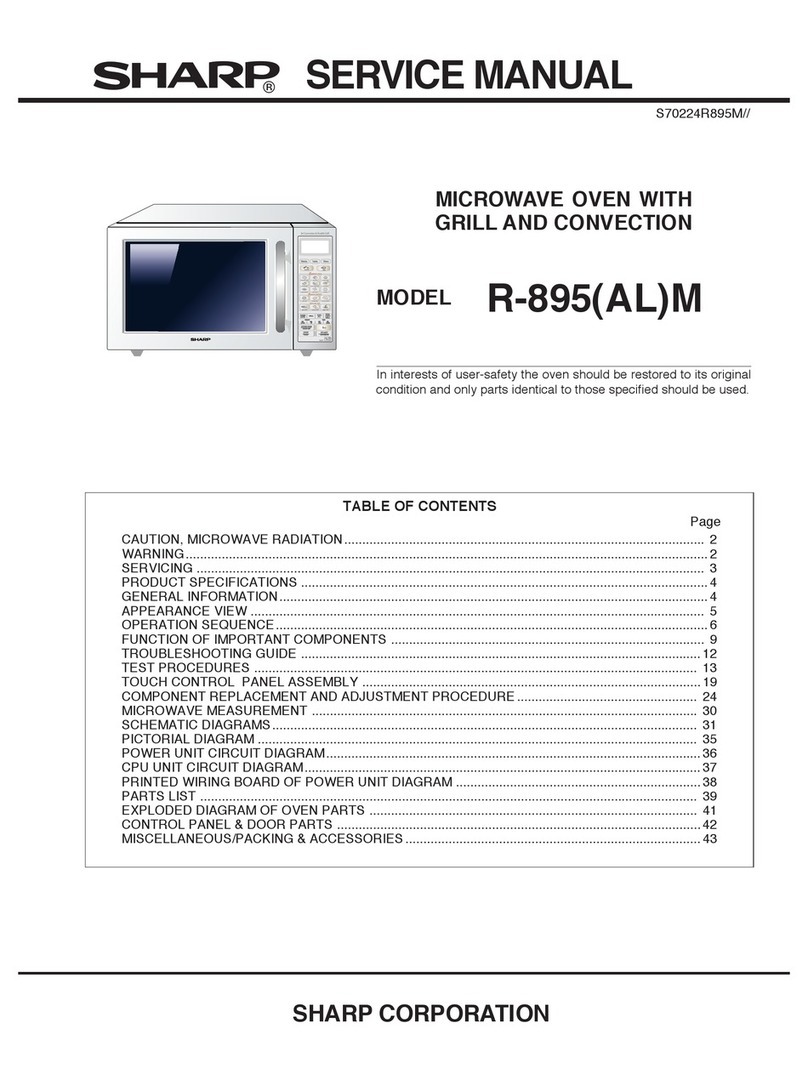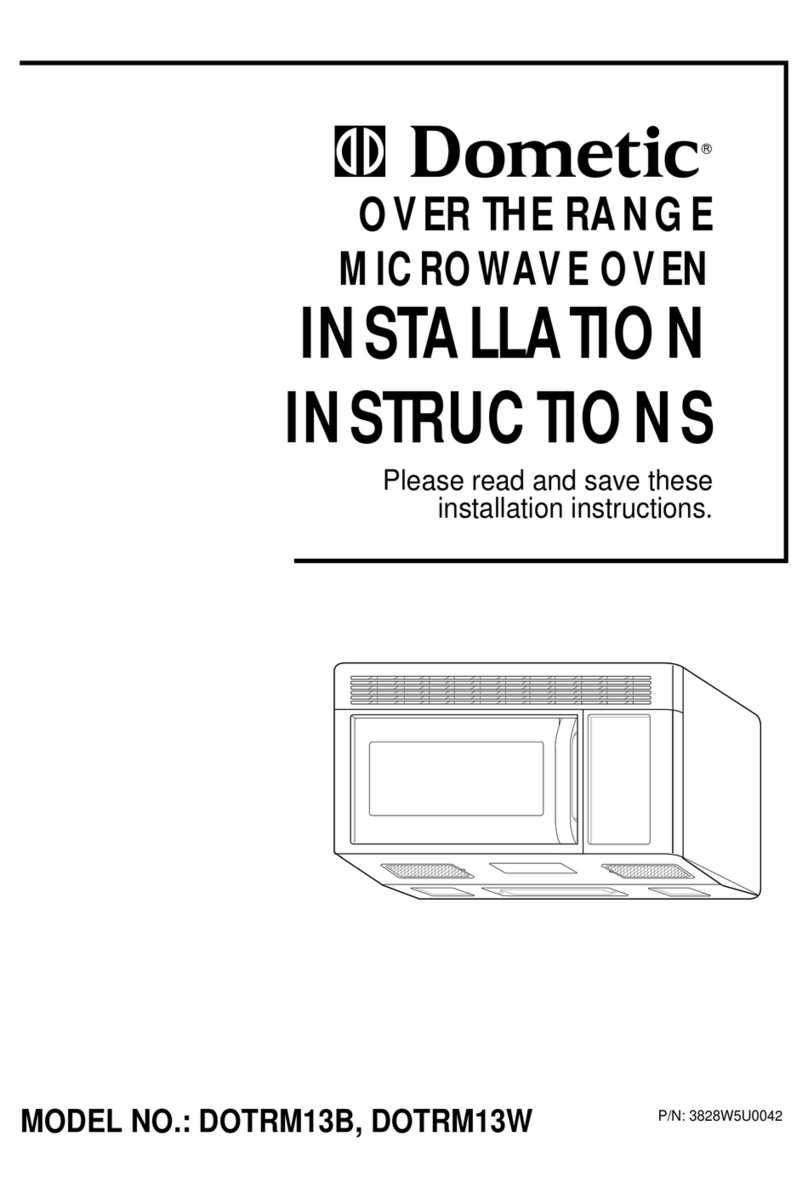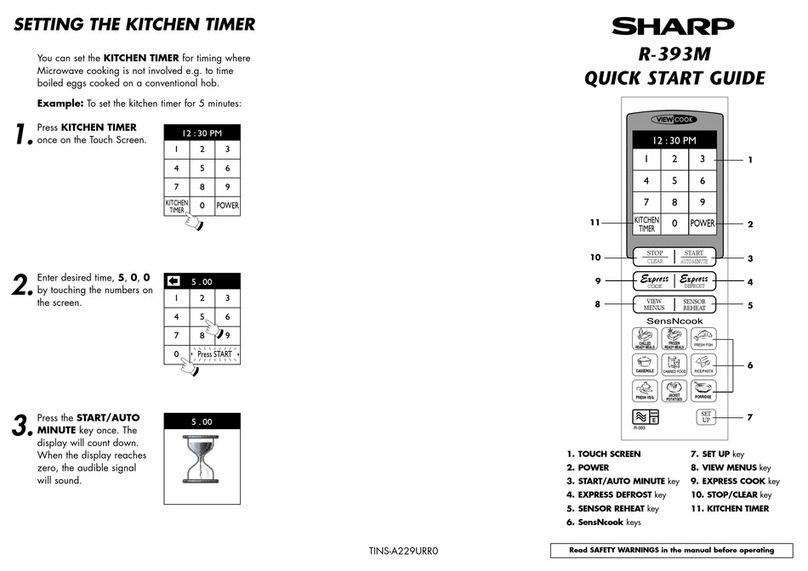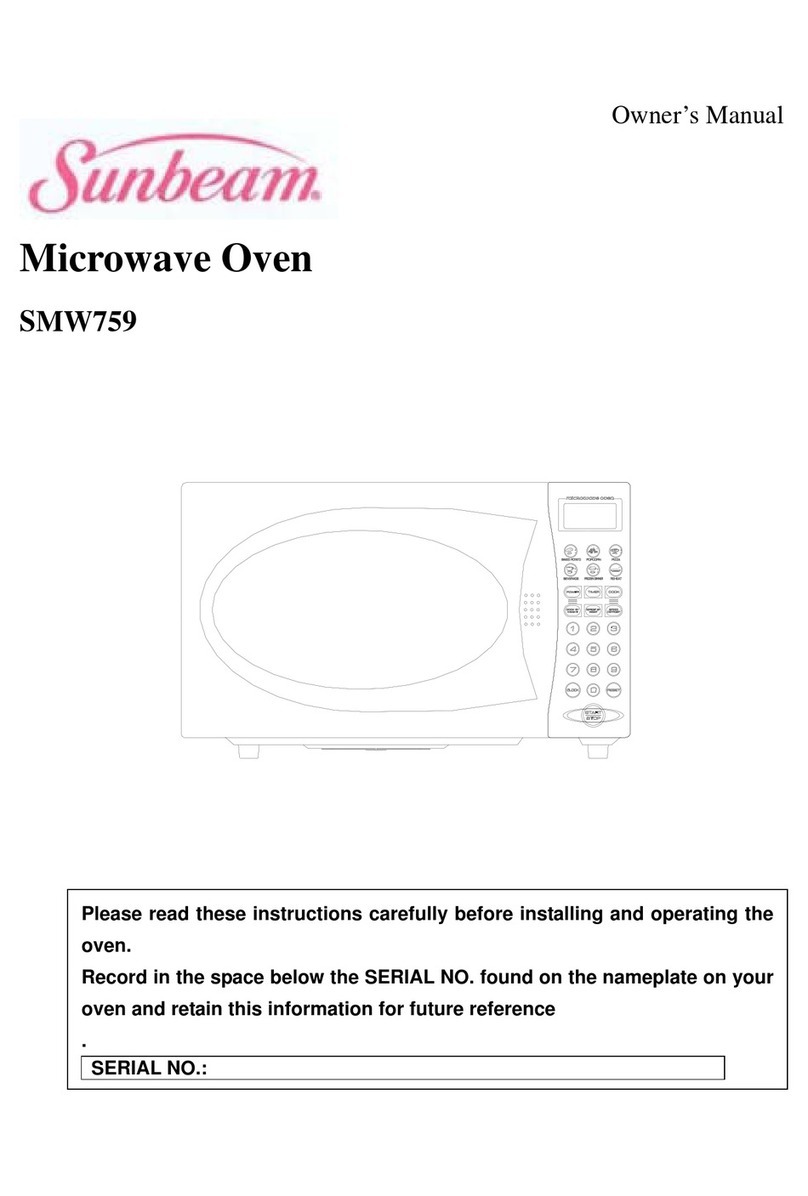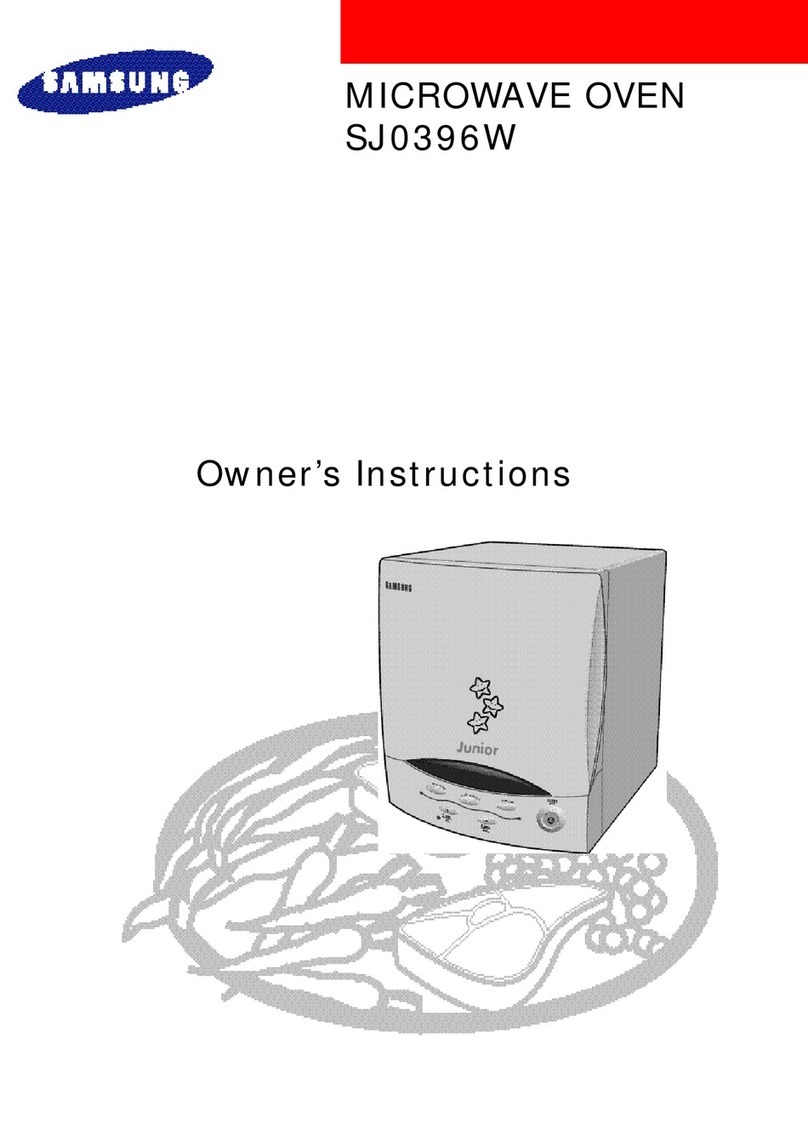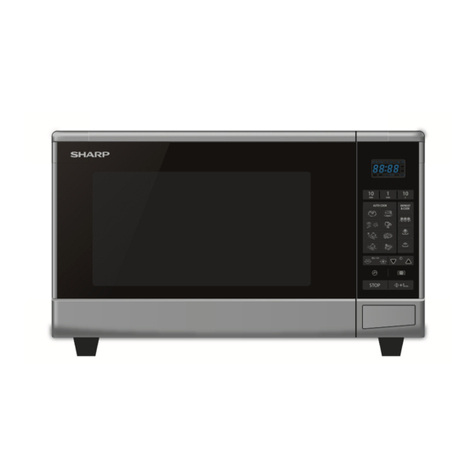IMPORTANT SAFETY INSTRUCTIONS
(continued)
●Some products such as whole
eggs and sealed containers—for
example, closed glass jars—may
explode and should not be
heated in this oven.
●Avoid heating baby food in
glass jars, even without their
lids; especially meat and egg
mixtures.
●Don’t defrost frozen bever-
ages in narrow necked bottles;
especially carbonated ones. Even
if the container is opened, pres-
sure can build up. This can cause
the container to burst, resulting
in injury.
.Use metal only as directed in
Cookbook. Metal strips as used
on meat roasts are helpful when
used as shown in Cookbook.
TV dinners may be cooked in
metal trays providing the metal
foil covers are removed, but when
using shelf they must be replaced
in their boxes. However, when
using metal in microwave oven,
keep metal (except for DOUBLE
DUTY%helf )at least l-inch away
from sides of oven.
●Cooking utensils may become
hot because of heat transferred
from the heated food. This is
especially true if plastic wrap
has been covering the top and
handles of the utensil.
Potholders may be needed to
handle the utensil.
●Sometimes, the cooking tray
can become too hot to touch. Be
careful handling the cooking
tray during and after cooking.
cDo not use any thermometer
in food you are microwaving
unless that thermometer is
designed or recommended for
use in the microwave oven.
●Remove the temperature
probe from the oven when not
using it to cook with. If you
leave the probe inside the oven
without inserting it in food or
liquid, and turn on microwave
energy, it can create electrical
arcing in the oven, and damage
oven walls.
●Plastic Utensils— Plastic
utensils designed for microwave
cooking are very useful, but
should be used carefully. Even
microwave plastic may not be as
tolerant of overcooking condi-
tions as are glass or ceramic
materials and may soften or char
if subjected to short periods of
overcooking. In longer exposures
of overcooking, the food and
utensils could ignite. For these
reasons: 1) Use microwave plas-
tics only and use them in strict
compliance with the utensil
manufacturer’s recommenda-
tions. 2) Do not subject empty
utensils to microwaving. 3) Do
not permit children to use plas-
tic utensils without complete
supervision.
cWhen cooking pork follow
our directions exactly and
always cook the meat to at least
170°. This assures that, in the
remote possibility that trichina
may be present in the meat, it
will be killed and meat will be
safe to eat.
●Boiling eggs (in and out of
shell) is not recommended for
cooking. Pressure can build up
inside egg yolk and may cause it
to burst, resulting in injury.
oFoods with unbroken outer
“skin” such as potatoes, hot
dogs or sausages, tomatoes,
apples, chicken livers and other
giblets, and eggs (see previous
caution) should be pierced to
allow steam to escape during
cooking.
●“Boilable” cooking pouches
and tightly closed plastic bags
should be slit, pierced or vented
as directed in Cookbook. If they
are not, plastic could burst
during or immediately after
cooking, possibly resulting in
injury. Also, plastic storage con-
tainers should be at least par-
tially uncovered because they
form atight seal. When cooking
with containers tightly covered
with plastic wrap, remove cov-
ering carefully and direct steam
away from hands and face.
●Use of the DOUBLE DUTYTM
shelf accessory.
—Remove the shelf from oven ‘
when not in use.
—Do not store or cook with
shelf on floor of oven. Product
damage may result.
–Use potholders when handling
the shelf and utensils. They may
be hot.
—Do not use microwave
browning dish on shelf. Product
damage could result.
